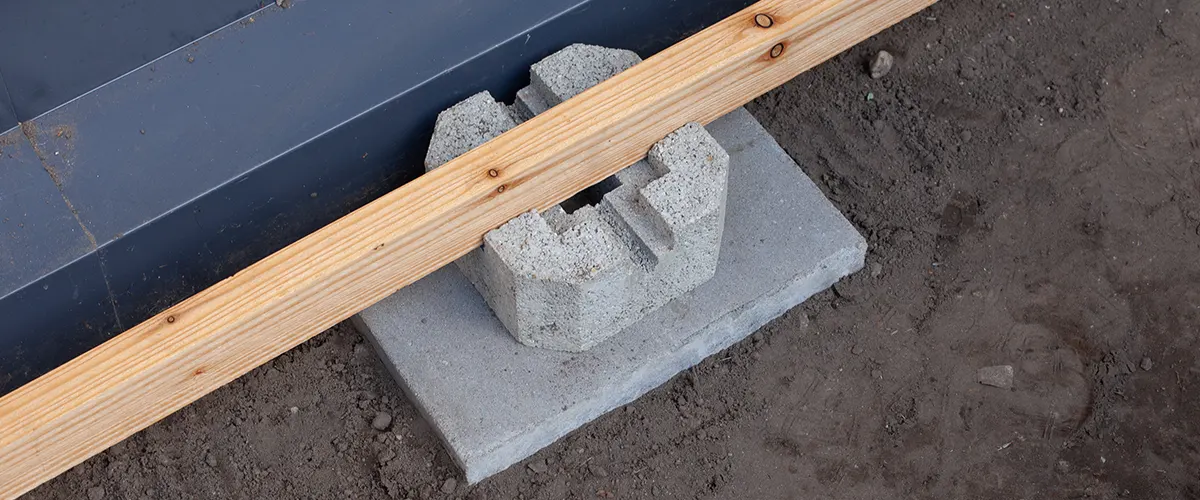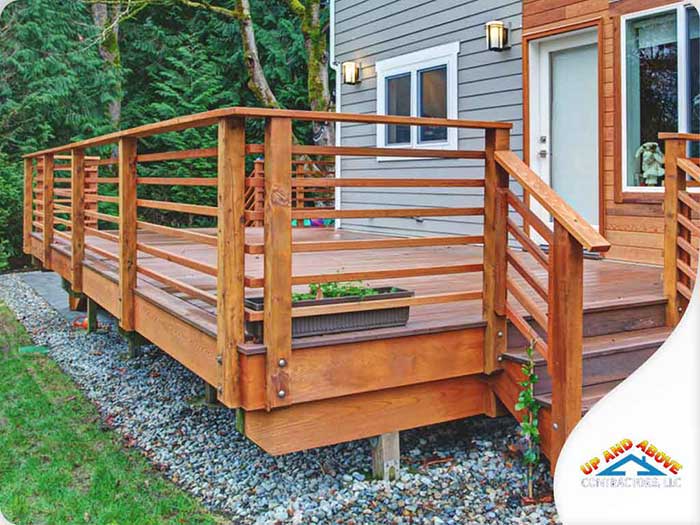Deck Footings Unveiled: Recognizing the Key Elements of a Dependable Deck Framework
Deck Footings Unveiled: Recognizing the Key Elements of a Dependable Deck Framework
Blog Article
Professional Tips for Installing Deck Footings to Assistance Your Outdoor Area
When it involves constructing a deck, among one of the most crucial components to think about is the installment of appropriate footings. These grounds are the foundation upon which your exterior area will rest, giving security and support for many years to find. Yet just what does it require to mount deck grounds properly? In this conversation, we will certainly discover experienced pointers and techniques that can help make sure a durable and successful deck installation. From choosing the appropriate kind of footings to preventing common mistakes, we will give you with the understanding and understandings you require to with confidence start your deck-building trip. Allow's dive right in and uncover the trick to a solid and long-lasting exterior area.
Importance of Proper Deck Footings
Appropriate deck grounds are essential for making sure the stability and long life of your exterior space. Without strong and correctly mounted footings, your deck might become unsteady, leading to security threats and costly repair work.

In addition to stability, correct deck grounds also add to the longevity of your outdoor area (Deck Footings). Grounds that are designed and built to endure the components and soil conditions in your area will assist prevent the deck from shifting or clearing up over time. By making certain the grounds are properly sized and set up, you can lessen the danger of damage to the deck structure, prolonging its life-span and reducing the need for costly repairs or substitutes

Picking the Right Type of Grounds
When selecting the appropriate kind of grounds for your deck, it is very important to think about factors such as dirt conditions, local building ordinance, and the general style of your exterior room. The sort of footing you pick will play an important function in making sure the stability and durability of your deck.
One usual type of ground is the concrete ground. Concrete grounds are appropriate for most soil problems and provide outstanding assistance for decks.
Sometimes, you may require to utilize customized grounds, such as pile footings or deep foundations, if you are developing a multi-level or big deck. These footings are made to distribute the weight of the deck over a bigger location, making certain stability and protecting against clearing up or sinking.
Prior to selecting a kind of ground, it is necessary to consult local building codes and regulations to guarantee conformity. In addition, think about the style and planned use your outdoor space. Aspects such as the size, shape, and load-bearing needs of your deck will influence the type of footing that is most appropriate.
Preparing the Ground for Footing Installment
To properly prepare the ground for footing setup, it is crucial to examine the soil problems and take essential actions to make certain security and toughness of the deck. The very first action is to excavate the area where the grounds will be installed.
When the area has been excavated, the following step is to small the soil. This can be done utilizing a plate compactor or by using a hand meddle. Compacting the soil helps to remove any kind of voids or air pockets, which can lead to clearing up and instability over time.
After condensing the soil, it is vital to lay a layer of gravel or crushed rock at the base of the excavation. This will certainly supply water drainage and help to stop water from pooling around the footings, which can cause disintegration and instability.
Step-by-Step Guide to Setting Up Deck Footings
After appropriately preparing the ground for footing installment, the next step is to begin the procedure of mounting deck grounds. This detailed overview will supply you with a clear understanding of just how to install deck grounds for your outdoor space.
Figure out the location: Beginning by noting the settings of the deck grounds making use of stakes and string. Ensure that the places line up with the style and format of your deck.
Dig the openings: Use a blog post opening digger or an auger to dig the holes for the grounds. The deepness and size of the holes need to be in accordance try these out with local building ordinance and the specific needs of your deck layout.
Degree the openings: Use a level to ensure that the holes are dug to the proper deepness and are degree with each other. (Deck Footings)
Include crushed rock: Place a layer of crushed rock at the end of each opening to improve drain and prevent the timber from decaying.
Insert the footings: Position the grounds into the openings, seeing to it they are level and plumb. Use a degree and a determining tape to ensure accuracy.
Safeguard the footings: Pour concrete into the holes around the footings, filling them to the top. Use an article degree to make certain the footings continue to be level as the concrete sets.
Permit time for healing: Let the concrete remedy according to the maker's directions prior to proceeding with the deck building.
Typical Mistakes to Stay Clear Of Throughout Footing Installment
One essential facet to take into consideration during the setup of deck footings is preventing usual blunders that can endanger the stability and durability of your outside space. While deck footings may appear like a easy and uncomplicated part of the building and construction process, neglecting specific variables can result in expensive page repair services and possible security hazards down the line.

Furthermore, overlooking to install correct drain procedures can create water to gather around the footings, resulting in rot, degeneration, and the ultimate weakening of the deck's structure. Utilizing the wrong type of footing material or stopping working to effectively protect the grounds can jeopardize their structural integrity.
To avoid these mistakes, it is important to talk to an expert or adhere to sector guidelines to ensure correct footing setup. By doing so, you can ensure the security and longevity of your outdoor room, offering a secure and satisfying setting for years to come.
Final Thought
In verdict, setting up proper deck footings is critical for the security and durability of your outdoor room. By selecting the appropriate kind of grounds and adequately preparing the ground, you can make certain a strong structure for your deck. Adhering to a step-by-step guide and preventing typical mistakes during footing that site installment will certainly further improve the sturdiness and safety of your deck.
Correct deck footings are vital for making sure the stability and durability of your outside room. The grounds serve as a link in between the deck and the ground, enabling the weight of the deck and its occupants to be dispersed evenly right into the soil.One typical kind of ground is the concrete footing. Place the footings: Put the grounds right into the holes, making certain they are degree and plumb. Safeguard the footings: Pour concrete into the openings around the footings, loading them to the top.
Report this page